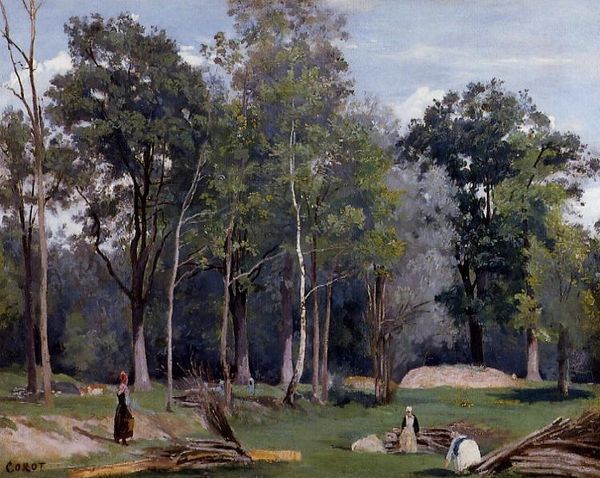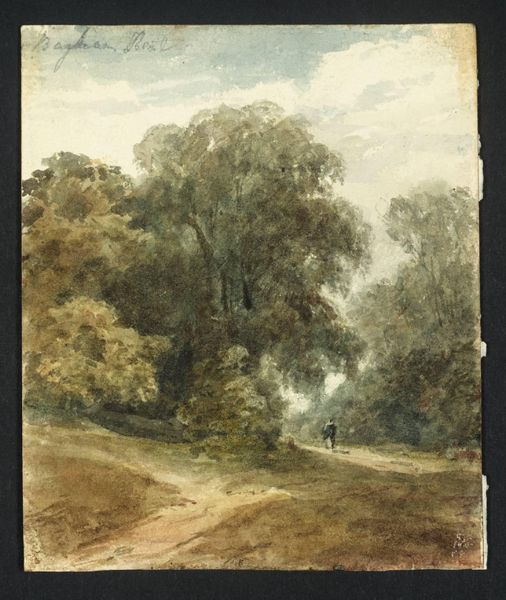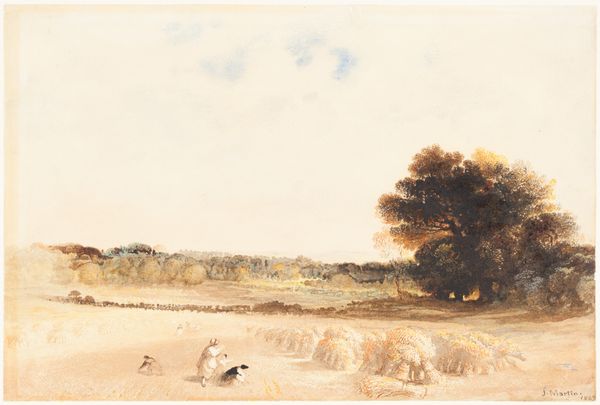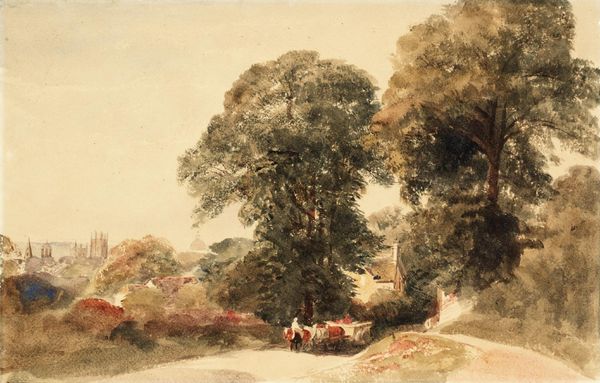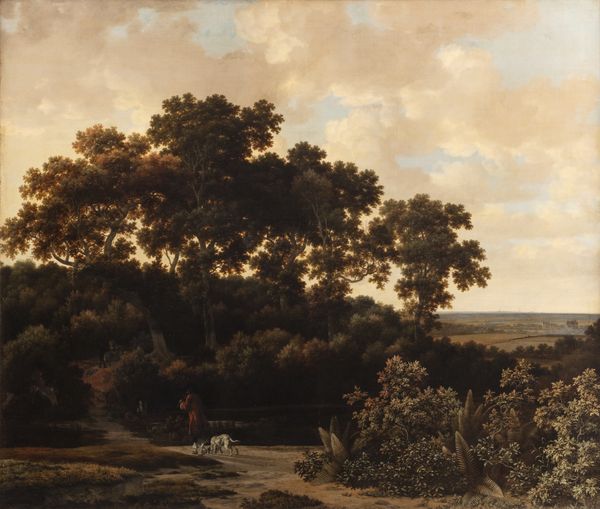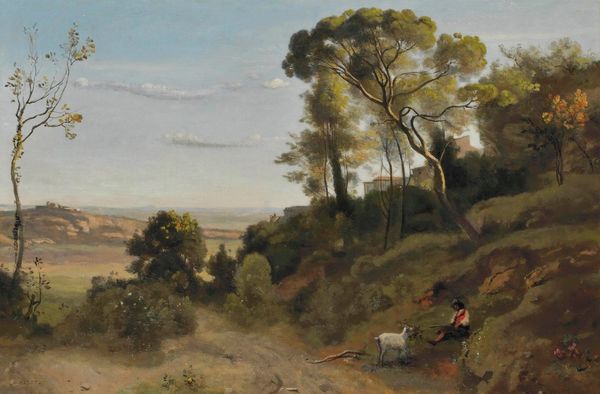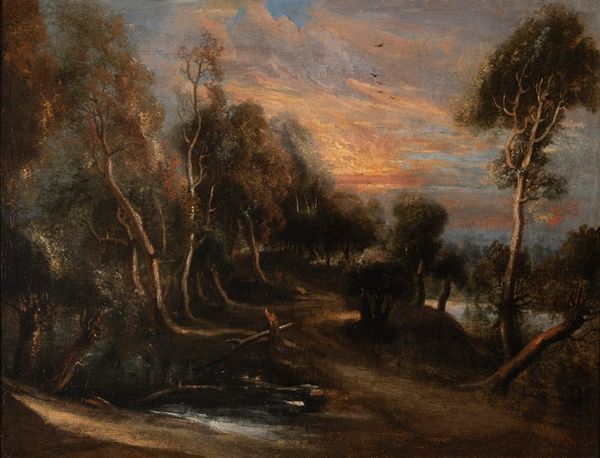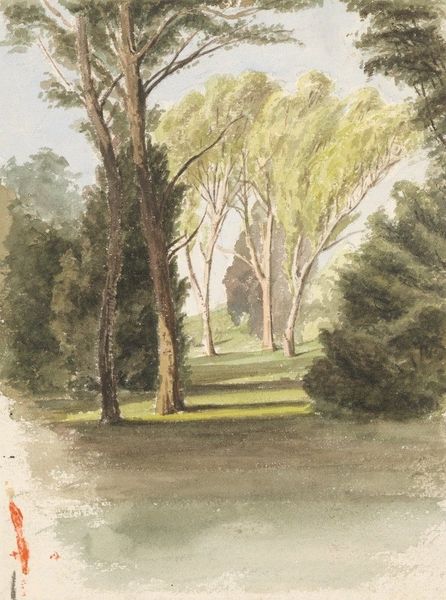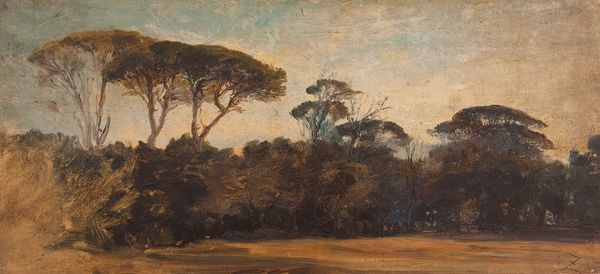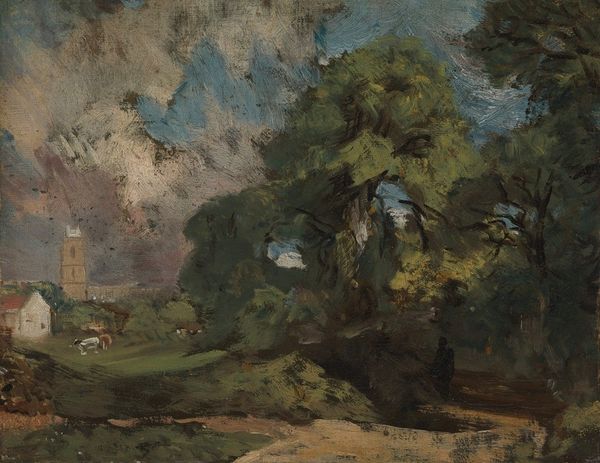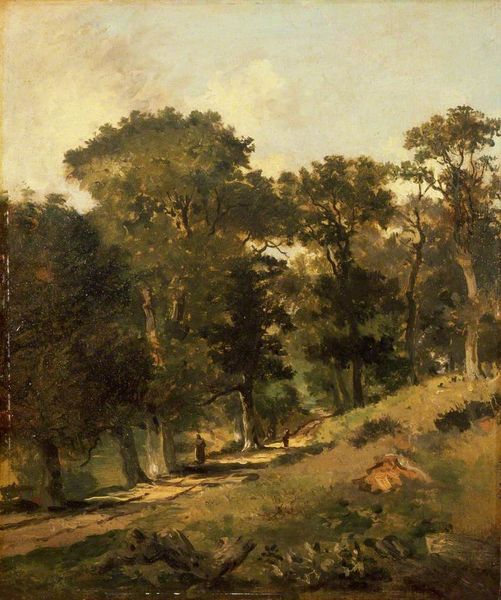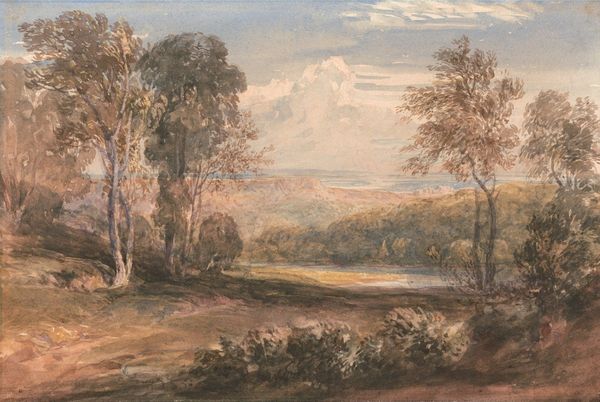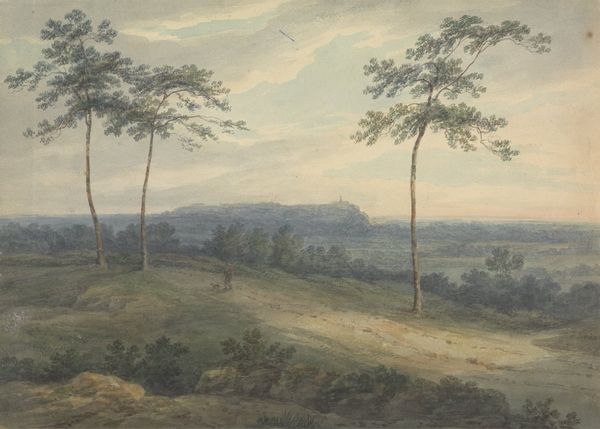
plein-air, oil-paint
#
tree
#
sky
#
plein-air
#
oil-paint
#
landscape
#
figuration
#
oil painting
#
romanticism
#
cityscape
Copyright: Public domain
Curator: Looking at "The Paver of the Chailly," an 1835 oil on canvas by Camille Corot, one immediately sees a fascinating combination of the monumental and the mundane. Editor: My initial impression is of earthy tones and dappled light; the whole scene feels heavy, grounded. There's something compelling in its subdued palette. It seems more concerned with labor than idyllic fantasy. Curator: Precisely. Corot's interest in portraying the working class within a landscape links him to larger social and political movements of his time. His choice to paint plein-air suggests an attentiveness to social realities outside the studio. The very act of depicting labor was significant. Editor: I'm drawn to the ground itself – you can practically feel the grit of the road. I am really curious about Corot’s method. Did he meticulously build up the surface, layer by layer? I see what appears to be figures, their tools, and piles of material: we must ask how they shaped this landscape in turn. Curator: Certainly. Consider the context: urban development was changing the French landscape drastically. By depicting such workers, he calls attention to their role in shaping and facilitating societal transformations. It reminds us that what we perceive as "nature" is very often produced through labor and politics. Editor: And that romantic lens also reveals the physical burden: how that physical act literally builds up a nation. It makes me wonder about Corot’s intentions—was it to ennoble this paver? Is this intended as Romantic heroism via toil? Or simply observation of working life? Curator: I think it's both, perhaps intentionally ambiguous. Corot positions the viewer to reflect on industrial advancement alongside those involved. Editor: Yes, now I perceive that interplay clearly. It’s in how those soft strokes render sky, branches, even human forms—so that materiality echoes throughout nature and constructed ground alike. Curator: Indeed, thank you, that has changed my impression of this painting! Editor: And in turn, your perspectives open my view toward that era and what we could understand from this painting!
Comments
No comments
Be the first to comment and join the conversation on the ultimate creative platform.
